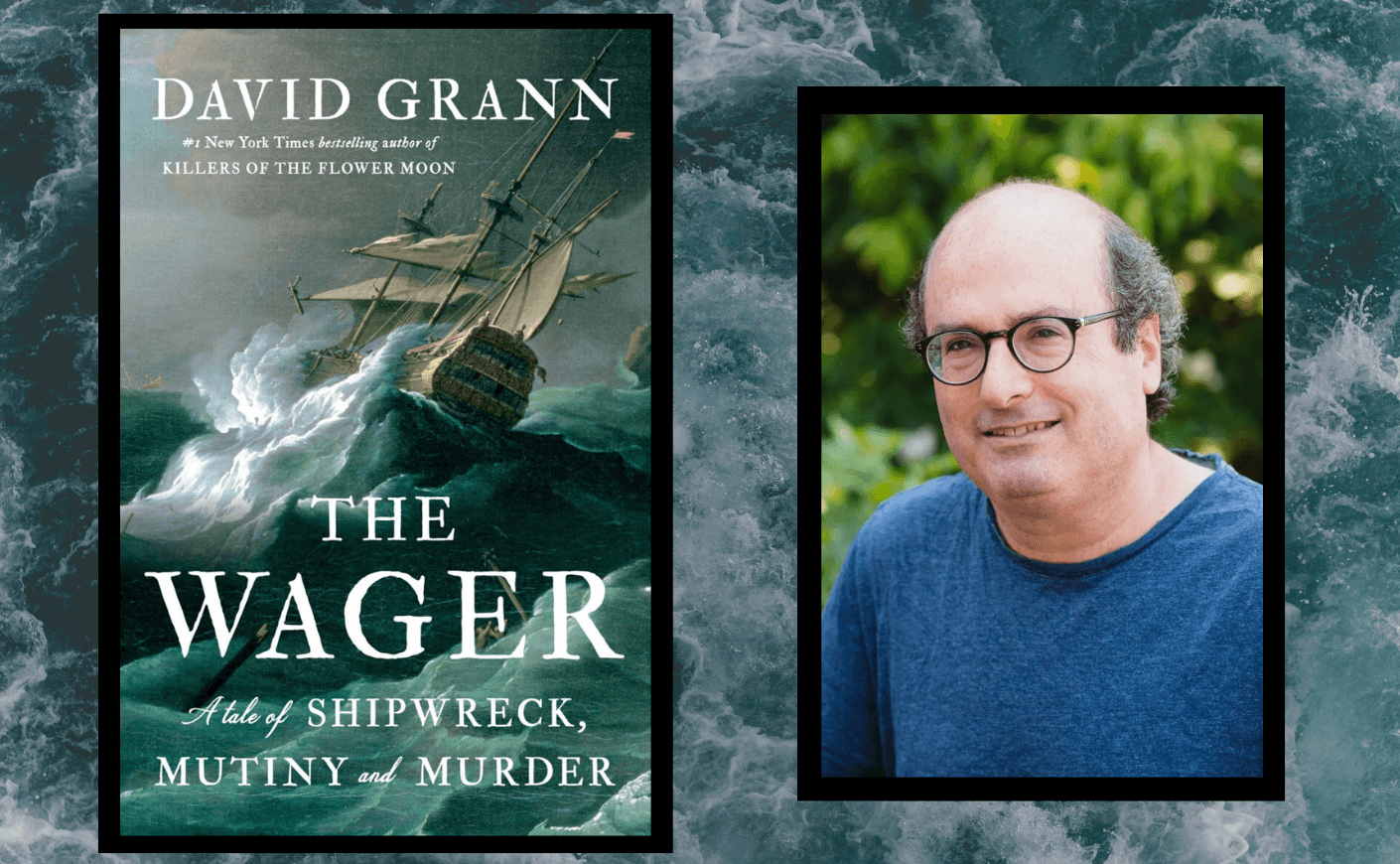One of my favorite new reads — which I'm recommending to everyone — is David Grann's latest non-fiction book The Wager. It's an account of an expedition of a British warship that was on a mission to capture Spanish treasure. But when things went deeply awry and the boat was wrecked, the survivors had to take extreme measures (including, yes, cannibalism) to stay alive. One of the reasons I'm such a huge fan of David's is because of his exhaustive historical research, and the way he uses it to spin tales that feel just as vivid and present today. So I had to know more about his newest creation — read on to find out how he discovered this shocking tale, more on what happened to the Wager's very unlucky castaways, and how it feels to have your work adapted to film (by Scorsese, no less!).
Your research years ago led you to write the 2017 book Killers of the Flower Moon, based on a series of murders in Oklahoma in the 1920s. I think I might describe you as a literary explorer: How did you come upon your latest discovery — the story behind your book The Wager?
I was doing research on mutinies when I stumbled across an 18th-century eyewitness account of the expedition by John Byron, who had been a 16-year-old midshipman on the British warship the Wager when the voyage began. The account was written in archaic English, but it described one of the most extraordinary sagas of survival I’d ever heard of—a saga so compelling that it had influenced the work of Charles Darwin, Herman Melville, and John Byron’s grandson, the poet Lord Byron.
What exactly was the Wager—and where was it headed? And what happened?
The Wager was part of a British naval squadron that set sail in 1740 on a secret mission: to try to capture a treasure-filled Spanish galleon known as the “prize of all the oceans.” But the Wager shipwrecked on a desolate island off the Chilean coast of Patagonia, where the castaways slowly descended into a real-life Lord of the Flies, with warring factions, mutiny, murder, and even cannibalism.
It sounds like what transpired was a combination of Survivor and Lord of the Flies. Can you tell us more?
That is a very apt description — and Yellowjackets, too! What is so fascinating about this story is not only what happened to the castaways on the island, but what happened after several of them incredibly made it back to England. They were summoned to face court-martial for their alleged crimes on the island; after everything they’d been through, they could be hanged. Desperate to save their lives, they offered wildly conflicting versions of the events, which unleashed a furious war over the truth. Just like today, there were competing narratives, disinformation, and allegations of “fake” news. So even though the story took place in the 1740s, it seemed like a parable for our own turbulent times.
You’re known for your meticulous research — tell us how you did it this time.
Astonishingly, there can still be found in archives a trove of firsthand documents from the expedition, including journals and logbooks. They somehow survived typhoons, tidal waves, naval battles, and shipwreck. All of these documents helped me to reconstruct this mad yarn. But research can also lead you to places you never expect. I’m not much of an explorer, but after a couple of years of combing the archives, I feared that I could never fully understand what the castaways had experienced unless I went to what is now known as Wager Island. And so I hired a Chilean captain with a small wood-heated boat and set off on a 350-mile journey to the island, which is situated in the Gulf of Sorrows — or, as some prefer to call it, the Gulf of Pain. At times our boat was tossed about so violently that I had to hunker down on the floor; otherwise, I might have been thrown and broken a limb. To pass the time I listened to an audio recording of Moby Dick, which in hindsight was not the most soothing thing to have done. But thankfully, the captain was extremely capable and led us safely to Wager Island. It remains a place of wild desolation — mountainous, rain-drenched, freezing, wind-swept and utterly barren. At last, I could understand why one British officer had called the island a place where “the soul of man dies in him.”
Meanwhile, the film version of your bestselling book Killers of the Flower Moon is debuting this year at Cannes, directed by Martin Scorsese and starring Leonardo DiCaprio. Not too shabby, David! Have you seen it?
I did, and I can’t wait for the rest of the world to see it!
Scorsese and Leo — I’ll call him by his first name because we’re tight, ha — have optioned this book as well. When you’re writing, do you think about the cinematic possibilities?
The funny thing is that I never do. Who in their right mind would have looked at that old, faded eighteenth-century account by John Byron and think it could lead to a movie? But I’m so grateful there are people interested in transforming these stories into films, so they can reach an even wider audience.









